Assistant Professor Arporn Teeramongkonrasmee, Ph.D.
ผศ. ดร.อาภรณ์ ธีรมงคลรัศมี
Education
- Ph.D (Electrical Engineering), Chulalongkorn University
- M Eng (Electrical Engineering), Tokyo Institute of Technology
- B Eng (Electrical Engineering), Chulalongkorn University
Email: Arporn.T@chula.ac.th
Research Interest
- Home Health Monitoring
- ECG
- BCG
- Gas Sensors
Research Cluster
Suphinnapong, P; Phokaewvarangkul, O; Thubthong, N; Teeramongkonrasmee, A; Mahattanasakul, P; Lorwattanapongsa, P; Bhidayasiri, R
Objective vowel sound characteristics and their relationship with motor dysfunction in Asian Parkinson's disease patients Journal Article
In: Journal of the Neurological Sciences, vol. 426, 2021, ISSN: 0022510X, (cited By 0).
@article{Suphinnapong2021,
title = {Objective vowel sound characteristics and their relationship with motor dysfunction in Asian Parkinson's disease patients},
author = {P Suphinnapong and O Phokaewvarangkul and N Thubthong and A Teeramongkonrasmee and P Mahattanasakul and P Lorwattanapongsa and R Bhidayasiri},
url = {https://www.scopus.com/inward/record.uri?eid=2-s2.0-85105806003&doi=10.1016%2fj.jns.2021.117487&partnerID=40&md5=0b91c9afd22b9dcf7fdae4521fb78fbe},
doi = {10.1016/j.jns.2021.117487},
issn = {0022510X},
year = {2021},
date = {2021-01-01},
journal = {Journal of the Neurological Sciences},
volume = {426},
publisher = {Elsevier B.V.},
abstract = {Background: Speech impairments are very common in patients with Parkinson's disease (PD). However, knowledge of their objective characteristics and relationship to other motor symptoms amongst Asian PD patients is limited. Objectives: To identify objective vowel sound characteristics in Thai PD patients and correlate with disease severity, as determined by UPDRS and various sub-scores. Method: We evaluated 100 Thai PD patients, with a mean age of 66.56 years (±7.52) and HY of 2.7 (±1.08), and 101 age-matched controls. Phonatory evaluation, comprising of 15 objective parameters, was conducted using the Multi-Dimensional Voice Programme with a sustained /a/ phonation. Results: PD patients exhibited significantly higher values of all dimensions of the phonatory parameters evaluated compared to controls (All, p < 0.001) except for duration of sustained phonation, which was significantly shorter in PD patients. When early- and advanced-stage patients were compared, significantly different parameters were limited to frequency perturbation parameters (Jitt},
note = {cited By 0},
keywords = {},
pubstate = {published},
tppubtype = {article}
}
Teeramongkonrasmee, A; Tanaka, T; Miyoshi, H; Aoyagi, S; Yamashita, K; Suzuki, Y; Okuyama, M
(111) Preferred oriented Pb(Zr,Ti)O3 thick films prepared by multilayer process and its application to ultrasonic sensors Journal Article
In: Japanese Journal of Applied Physics, Part 1: Regular Papers and Short Notes and Review Papers, vol. 43, no. 10, pp. 7207-7212, 2004, ISSN: 00214922, (cited By 1).
@article{Teeramongkonrasmee2004,
title = {(111) Preferred oriented Pb(Zr,Ti)O3 thick films prepared by multilayer process and its application to ultrasonic sensors},
author = {A Teeramongkonrasmee and T Tanaka and H Miyoshi and S Aoyagi and K Yamashita and Y Suzuki and M Okuyama},
url = {https://www.scopus.com/inward/record.uri?eid=2-s2.0-10844231974&doi=10.1143%2fJJAP.43.7207&partnerID=40&md5=ceb1ea47dae68de645f46dd59bd86798},
doi = {10.1143/JJAP.43.7207},
issn = {00214922},
year = {2004},
date = {2004-01-01},
journal = {Japanese Journal of Applied Physics, Part 1: Regular Papers and Short Notes and Review Papers},
volume = {43},
number = {10},
pages = {7207-7212},
abstract = {We report the deposition of Pb(Zr0.52Ti0.48)O 3 (PZT) thick films on Pt/Ti/SiO2/Si substrates using a multilayer process to suppress the problem of crack formation due to thermal stress. The thickness dependences of film structure, ferroelectric and dielectric properties were investigated over the thickness range of 0.24-4.6 μm. A strong (111) orientation was obtained from all films deposited in the experiments. For a constant applied field of 170 kV/cm, remanent polarization, 2Pr developed from 14 μC/cm2 to 60 μC/cm 2, as film thickness increased from 0.24 to 4.6 μm. Dielectric constant also increased with film thickness, and reached the maximum value of 1300 at the thickness of 4.6 μm. These trends were interpreted in terms of the interfacial effect on the electrical characteristics. A thin-film-type ultrasonic sensor was fabricated by depositing a multilayered PZT thick film onto an SOI substrate having a membrane structure, and its characteristics are reported.},
note = {cited By 1},
keywords = {},
pubstate = {published},
tppubtype = {article}
}
Tanaka, T; Li, X -S; Teeramongkonrasmee, A; Suzuki, Y
Structural and ferroelectrical properties of (111) oriented lead zirconate titanate thick films for microultrasonic sensors Journal Article
In: Sensors and Materials, vol. 14, no. 7, pp. 373-385, 2002, ISSN: 09144935, (cited By 0).
@article{Tanaka2002,
title = {Structural and ferroelectrical properties of (111) oriented lead zirconate titanate thick films for microultrasonic sensors},
author = {T Tanaka and X -S Li and A Teeramongkonrasmee and Y Suzuki},
url = {https://www.scopus.com/inward/record.uri?eid=2-s2.0-19744377357&partnerID=40&md5=caff6a9a884b0fd4e041da43de3156b7},
issn = {09144935},
year = {2002},
date = {2002-01-01},
journal = {Sensors and Materials},
volume = {14},
number = {7},
pages = {373-385},
abstract = {Lead zirconate titanate (PZT) thin films with highly oriented perovskite phase were prepared by two kinds of processes: (1) reactive DC sputtering with two facing metal targets, and (2) radio frequency (RF) sputtering with two facing PZT ceramic targets. The reactive DC sputtering deposition rate is 10 times as high as that of deposition by RF sputtering with ceramic targets. The 500°C-deposited film shows ferroelectric property with the values of remanent polarization (Pr) of 5.6 μC/cm2 and saturation polarization (Ps) of 22.5 μC/cm2. A multistep process was used for preparing (111) oriented PZT thick film with excellent properties by RF facing target sputtering. Suppression of cracks could be observed in PZT films with this multilayer structure. The XRD results showed that all films in the experiments showed a strong orientation of (111) perovskite phase. The polarization-electric field (P-E) hysteresis loops were improved with film thickness and Pr developed from 7 μC/cm2 to 30 μC/cm 2, as film thickness increased from 0.24 to 4.6 μm. The dielectric constant also increased with film thickness, and reached the maximum value of 1300.},
note = {cited By 0},
keywords = {},
pubstate = {published},
tppubtype = {article}
}
Teeramongkonrasmee, A; Tanaka, T; Nakamura, Y; Aoyagi, S; Yamashita, K; Suzuki, Y; Okuyama, M
Highly oriented Pb(Zr, Ti)O3 films prepared by multi-step process Journal Article
In: Shinku/Journal of the Vacuum Society of Japan, vol. 44, no. 5, pp. 534-538, 2001, ISSN: 05598516, (cited By 2).
@article{Teeramongkonrasmee2001,
title = {Highly oriented Pb(Zr, Ti)O3 films prepared by multi-step process},
author = {A Teeramongkonrasmee and T Tanaka and Y Nakamura and S Aoyagi and K Yamashita and Y Suzuki and M Okuyama},
url = {https://www.scopus.com/inward/record.uri?eid=2-s2.0-0034891158&doi=10.3131%2fjvsj.44.534&partnerID=40&md5=a53c632b0776707ae9a9f33405afe7e7},
doi = {10.3131/jvsj.44.534},
issn = {05598516},
year = {2001},
date = {2001-01-01},
journal = {Shinku/Journal of the Vacuum Society of Japan},
volume = {44},
number = {5},
pages = {534-538},
publisher = {Vacuum Society of Japan},
abstract = {Pb(Zr0.52Ti0.48)O3 films up to 1.5 μm thickness have been prepared by multi-step process to suppress the problem of crack formation due to the thermal stress. The thickness dependence of film structure, ferroelectric, dielectric properties have been investigated over the thickness range of 0.24-1.5 μm. A strong (111) orientation was obtained from all films deposited in the experiments. For a constant applied field of 170 kV/cm, remanent polarization, 2Pr developed from 14 μC/cm2 to 30 μC/cm2, as film thickness increased from 0.24 to 1.5 μm. Dielectric constant also increased with film thickness, and reached the maximum value of 1200 at 1.5 μm. These trends are interpreted in terms of the influence of interfacial effect on the electrical characteristics.},
note = {cited By 2},
keywords = {},
pubstate = {published},
tppubtype = {article}
}
Teeramongkonrasmee, A; Sriyudthsak, M
Methanol and ammonia sensing characteristics of sol-gel derived thin film gas sensor Journal Article
In: Sensors and Actuators, B: Chemical, vol. 66, no. 1, pp. 256-259, 2000, ISSN: 09254005, (cited By 106; Conference of IMCS-7: 7th International Meeting on Chemical Sensors ; Conference Date: 27 July 1998 Through 30 July 1998; Conference Code:57106).
@article{Teeramongkonrasmee2000,
title = {Methanol and ammonia sensing characteristics of sol-gel derived thin film gas sensor},
author = {A Teeramongkonrasmee and M Sriyudthsak},
url = {https://www.scopus.com/inward/record.uri?eid=2-s2.0-0033689372&doi=10.1016%2fS0925-4005%2800%2900346-4&partnerID=40&md5=698dc5a2e8c565376b0601558a13f693},
doi = {10.1016/S0925-4005(00)00346-4},
issn = {09254005},
year = {2000},
date = {2000-01-01},
journal = {Sensors and Actuators, B: Chemical},
volume = {66},
number = {1},
pages = {256-259},
publisher = {Elsevier Sequoia SA, Lausanne},
address = {Beijing, China},
abstract = {SnO2 thin film gas sensors have been prepared by sol-gel technique. The tin alkoxide precursor was synthesized by chemical reactions involving tin tetrachloride and sodium ethoxide. The gas sensing characteristics have been studied using a flow injection analysis and liquid samples of alcohol and ammonia. The experimental results revealed that the film thickness strongly affected gas sensitivity of the SnO2 films. The SnO2 gas sensors gave linear relationship between logarithm of gas sensitivity and logarithm of sample concentration in the range of 0.26-10% by volume for alcohol and 0.05-10% by volume for ammonia with the operation temperature of 350 °C.},
note = {cited By 106; Conference of IMCS-7: 7th International Meeting on Chemical Sensors ; Conference Date: 27 July 1998 Through 30 July 1998; Conference Code:57106},
keywords = {},
pubstate = {published},
tppubtype = {article}
}
Teeramongkonrasmee, A; Sriyudthsak, M
Problems in gas sensor measuring circuit and proposal of new circuit Journal Article
In: Sensors and Materials, vol. 11, no. 3, pp. 149-162, 1999, ISSN: 09144935, (cited By 2).
@article{Teeramongkonrasmee1999,
title = {Problems in gas sensor measuring circuit and proposal of new circuit},
author = {A Teeramongkonrasmee and M Sriyudthsak},
url = {https://www.scopus.com/inward/record.uri?eid=2-s2.0-0033466555&partnerID=40&md5=44b0e9f776a65f7a11ed2bb6953a4234},
issn = {09144935},
year = {1999},
date = {1999-01-01},
journal = {Sensors and Materials},
volume = {11},
number = {3},
pages = {149-162},
abstract = {An analysis including the nonlinear characteristic of gas sensors shows that the conventional gas measuring circuit is not suitable for determining gas sensitivity (S = Rair/ Rgas). This circuit exhibits a dependence of sensitivity on the values of external circuit components, i.e., series resistance (R) and voltage source (Vin). Moreover, the dynamic parameters, such as recovery time, are also strongly affected by these external components. These problems prevent the use of the conventional circuit in the comparison of gas sensing performance and gas sensitivity among different sensors. A novel gas measuring circuit is proposed to overcome these problems. In this new circuit, the electrical operating point of the semiconductor gas sensor is kept at a constant value and is not disturbed by the change of the external resistance. The experimental results showed that the new circuit gave a nearly constant sensitivity and faster recovery time.},
note = {cited By 2},
keywords = {},
pubstate = {published},
tppubtype = {article}
}

